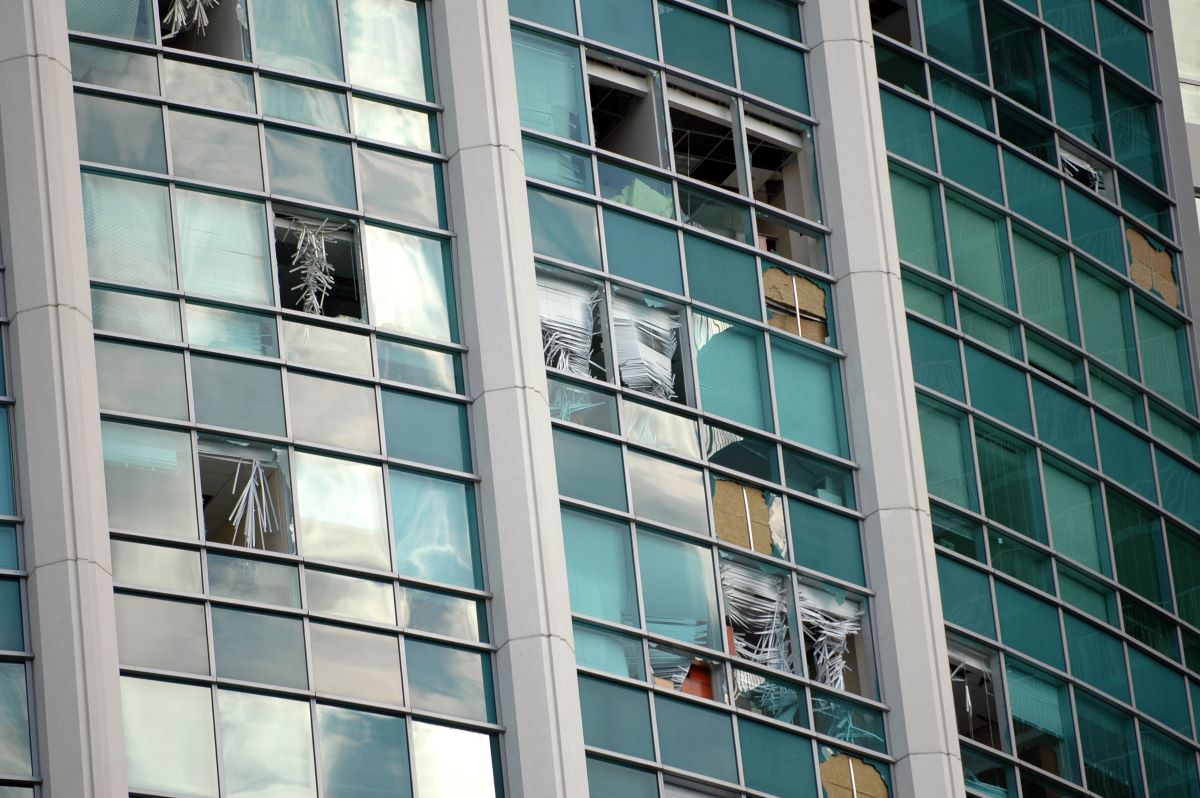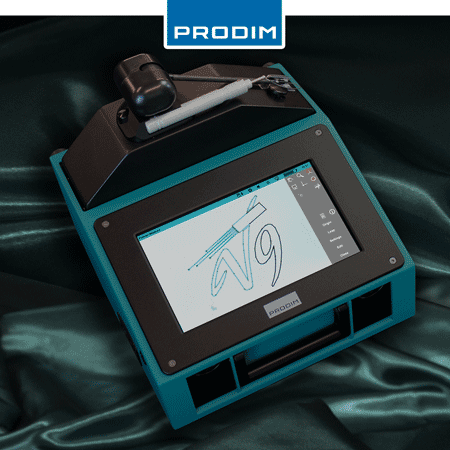Tornado-Resistant Glazing
Specifying security performance for windows and doors

Pictured: The Brickell Avenue area in Miami, Florida, suffered significant damage during Hurricane Wilma in 2005.
 Windows and doors can be specified with a level of security performance to help protect buildings and occupants in the event of natural disasters such as hurricanes, tornados, earthquakes, floods and wildfires. The following is adapted from the National Glass Association’s Glass Technical Paper FB61-24 Tornado Resistant Glazing: Standards and Performance Requirements, available for free download.
Windows and doors can be specified with a level of security performance to help protect buildings and occupants in the event of natural disasters such as hurricanes, tornados, earthquakes, floods and wildfires. The following is adapted from the National Glass Association’s Glass Technical Paper FB61-24 Tornado Resistant Glazing: Standards and Performance Requirements, available for free download.
Storm shelters
Storm shelters play a vital role in keeping people safe during a tornado in tornado- and hurricane-prone areas where high winds occur. These shelters can be detached from a building or contained as safe rooms within a building to provide a safe refuge for people.
Standard for storm shelters
Key to understanding the performance requirements for storm shelters in tornado-prone areas is a review of the ANSI/ICC 500 ICC/NSSA Standard for the Design and Construction of Storm Shelters. This standard was developed through a collaboration between the International Code Council and the National Storm Shelter Association. It is currently available for adoption and use by any jurisdiction. The standard addresses wind load requirements, as well as missile impact criteria.
The debris impact test for tornado shelters is similar to the hurricane large missile impact test and uses similar equipment. However, for tornado shelter testing, the hurricane large missile 9-pound (4.1 kilogram) 2-by-4-foot sawn lumber is replaced by a 15-pound (6.8 kg) 2-by-4-foot sawn lumber traveling at speeds specified according to the design wind speed in the Table below.
Building code requirements
The International Building Code includes requirements for storm shelters. Storm shelters constructed in accordance with ICC 500 are required in specific occupancies where the shelter design wind speed is 250 miles per hour. These include 911 call stations; emergency operation centers; and fire, rescue, ambulance and police stations. Additionally, all Group E occupancies with an aggregate occupant load of 50 or more people are required to have storm shelters. Group E occupancies include buildings for educational purposes through the 12th grade, such as elementary, junior high and high schools. Day care and accessories to places of religious worship are exempt.
While there are no requirements at present for the use of impact-resistant glazing in exterior glazed openings of host buildings, the designer and specifier may want to refer to the performance requirements in the ICC 500 for testing of glazing systems intended for use in exterior applications. Manufacturers with commercially available systems will be able to provide testing information on these systems.
Systems testing
Doors, windows and skylight assemblies, as well as impact protective systems such as storm shutters, are required to be tested with anchorage devices and structure to which the system is to be mounted. Testing details are found in ASTM E1886 Standard Test Method for Performance of Exterior Windows, Curtain Walls, Doors, and Impact Protective Systems Impacted by Missile(s) and Exposed to Cyclic Pressure Differentials.
Window assemblies and other glazed openings shall be impacted in the center of the smallest glazed section and at one interface corner. Where interior mullions or other glazed section joints and/or latches are present, additional impacts are required. However, no more than two impacts shall be made on a single specimen. Any perforation of the interior surface of the tested component constitutes a failure. Specimens and load-bearing fasteners shall not become disengaged or dislodged, nor excessive spall released during the test that could endanger occupants. Perforation of the witness screen by any dislodgment or spall constitutes a failure.
In addition to impact testing, static pressure testing is required for window assemblies and other glazed openings, as well as door assemblies with glazing, sidelights or transoms that are part of a tornado shelter. Testing is done according to ASTM E330 Standard Test Method for Structural Performance of Exterior Windows, Doors, Skylights and Curtain Walls by Uniform Static Air Pressure Difference to a pressure of at least 1.2 times the pressures specified in the ICC 500 standard. The pressure testing is done prior to impact and is permitted to be conducted separately from debris impact tests. If part of a hurricane shelter, post-impact cyclic pressure tests shall be performed following ASTM E1886.
NGA thanks the following companies for volunteering their time and expertise in developing the NGA Glass Technical Paper FB61-24 Tornado Resistant Glazing: Standards and Performance Requirements: Kuraray America, Viracon, Eastman Chemical, Technical Glass Products, Intertek, Curtain Wall Design & Consulting, and UL.

